How to identify bryozoans
When part of your work consists of identifying organisms, you gradually learn which characters are important to know whether it is that species or another. This also applies to bryozoans, which have a number of features that are important for identification.
Here I will talk a little about which characters are often used when it comes to identifying bryozoans belonging to the order Cheilostomatida. There other features that you can use, but in order not to make this text infinitely long, I have limited it to contain the most common characters.
Shape and growth
The shape and growth form of a bryozoan colony are both important features to use when determining what kind of families/genera/species you are dealing with. For example, you have the family Bugulidae where you have species that form erect, often fragile and flexible colonies (Fig. 1). While in the family Escharellidae, you often find species where non-flexible colonies encrust a substrate, a bit like lichens (Fig. 2).
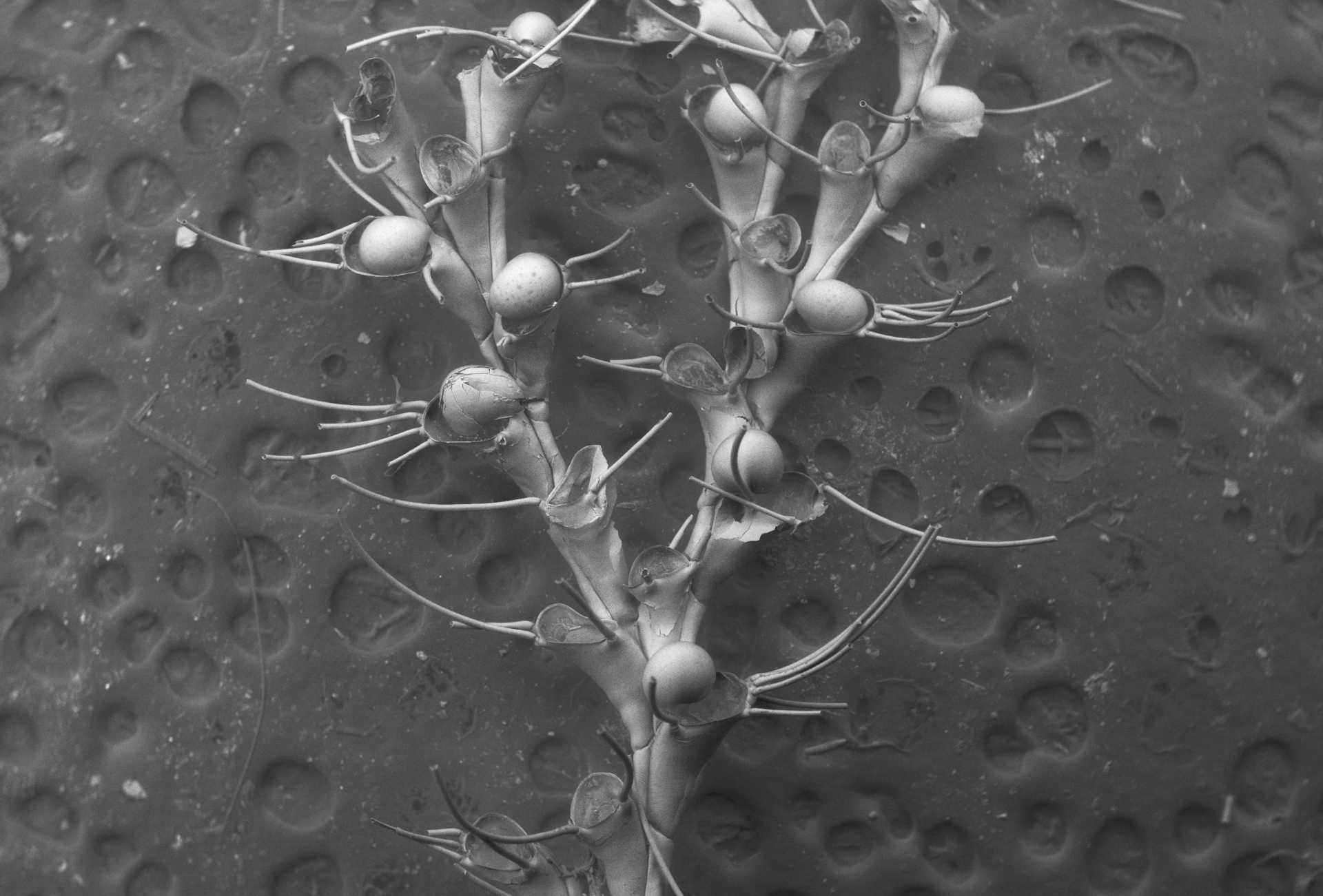
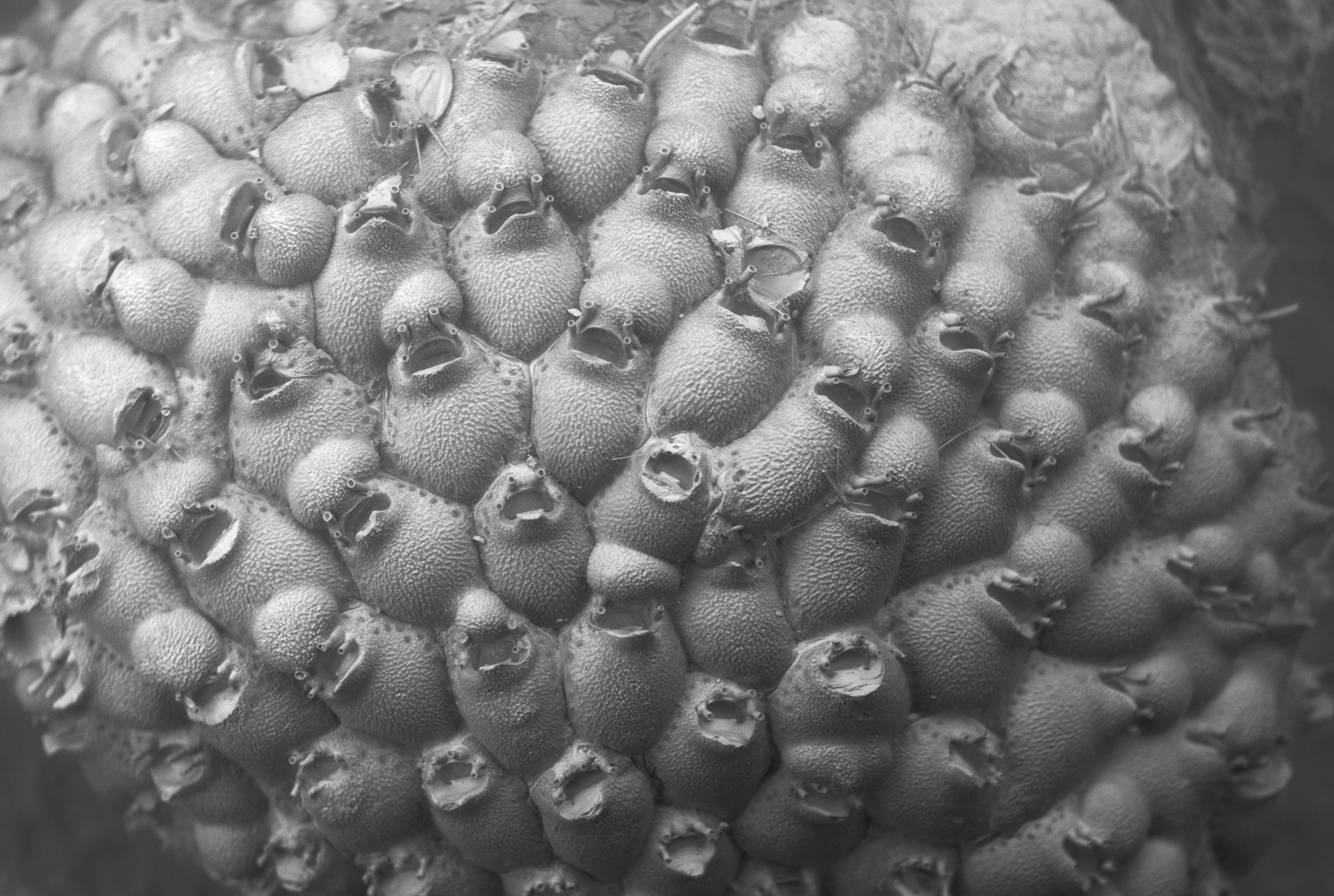
Frontal shield or lack thereof
Some families and genera of cheilostomatids can also be distinguished by the presence or absence of a frontal shield. All cheilostomatids contain some calcium carbonate, but not all have their entire front calcified like in Fig. 2. Some only have a membrane that separates the soft parts of the animals from the environment (Fig. 3).

The great variation of avicularia
Avicularia are highly modified zooids that may have evolved as a form of defense mechanism although this has not been confirmed yet. The shape and size of avicularia can vary greatly from species to species, but also within the same species or even colony! Absence (Fig. 3)/presence of avicularia along with their position, shape and size can be very important when it comes to species identification.
Some species have avicularia that resemble a bird's head (Fig. 4), and this is actually what gave origin to the name avicularia (From the Latin avis = bird). In Fig. 5 you see an avicularium belonging to Hippoporina harmsworthi.
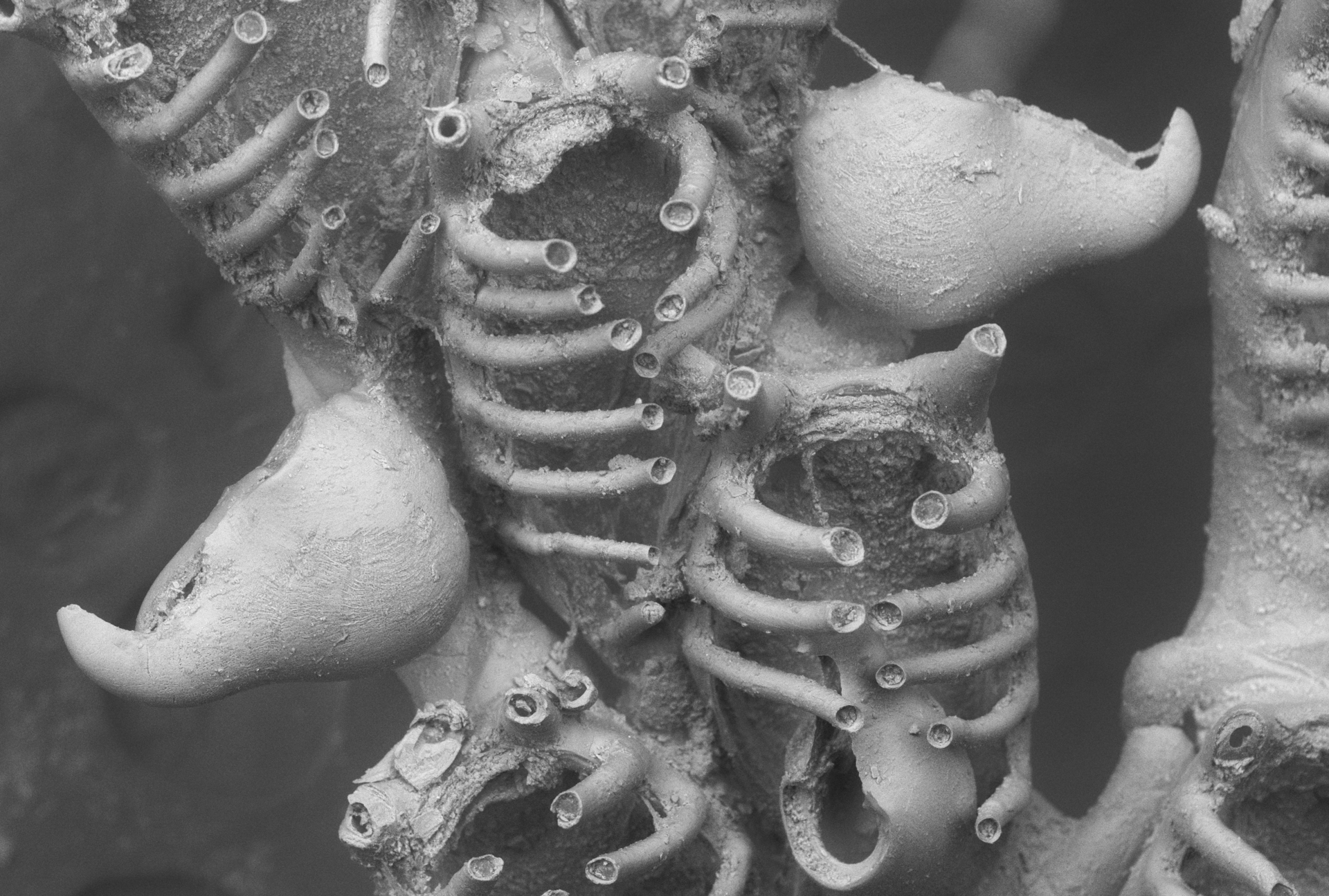
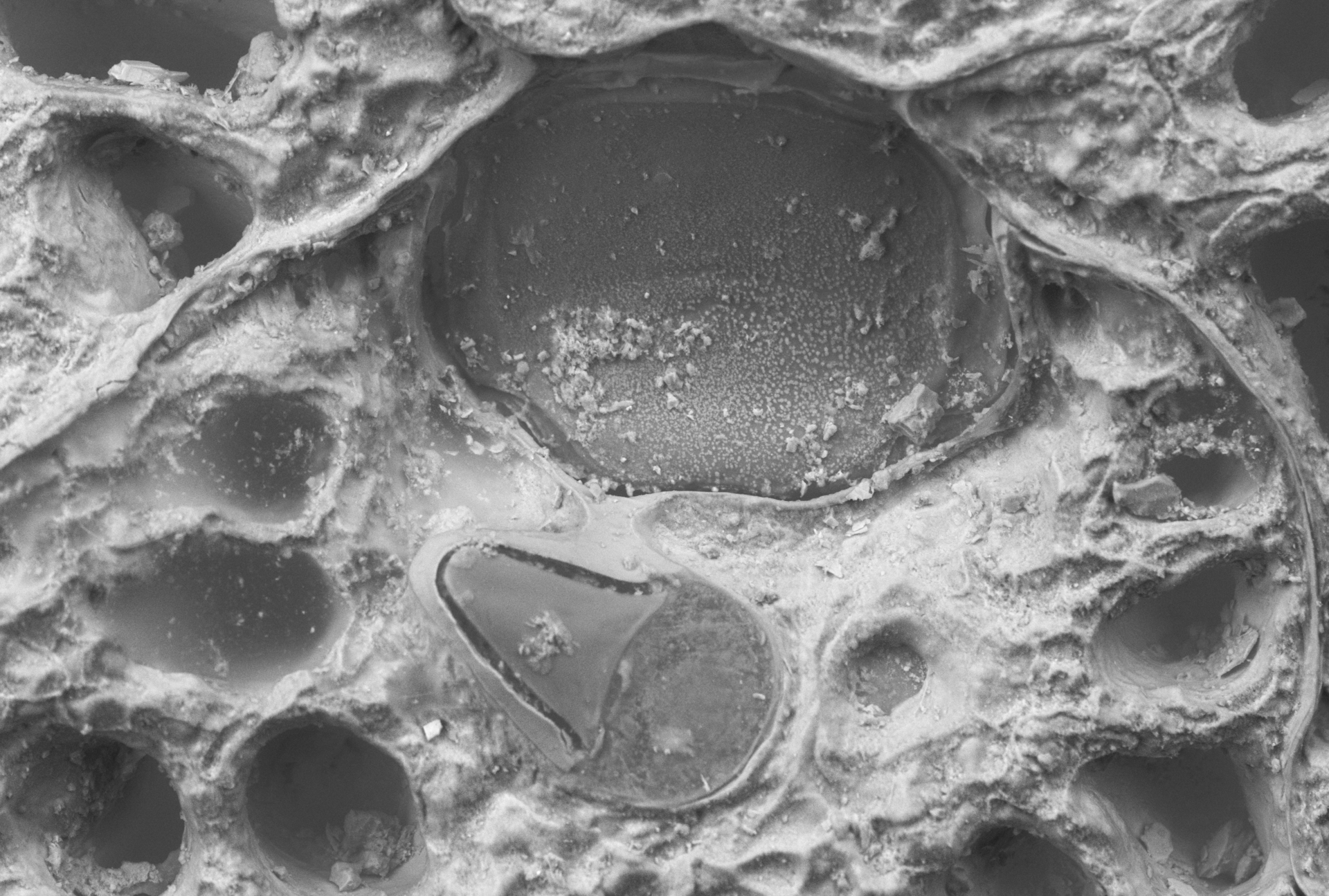
Parental care
How the bryozoans develop and care for their eggs can vary a great deal, but in many cheilostomatids we find brooding chambers (ovicells), and their appearance, shape and size, as well as the way they form, are key when it comes to identifying species
Ovicells can be with or without pores, show the same or different texture as the rest of the zooid and be giant or barely visible. Fig. 2 and 6 show ovicells with different appearances.
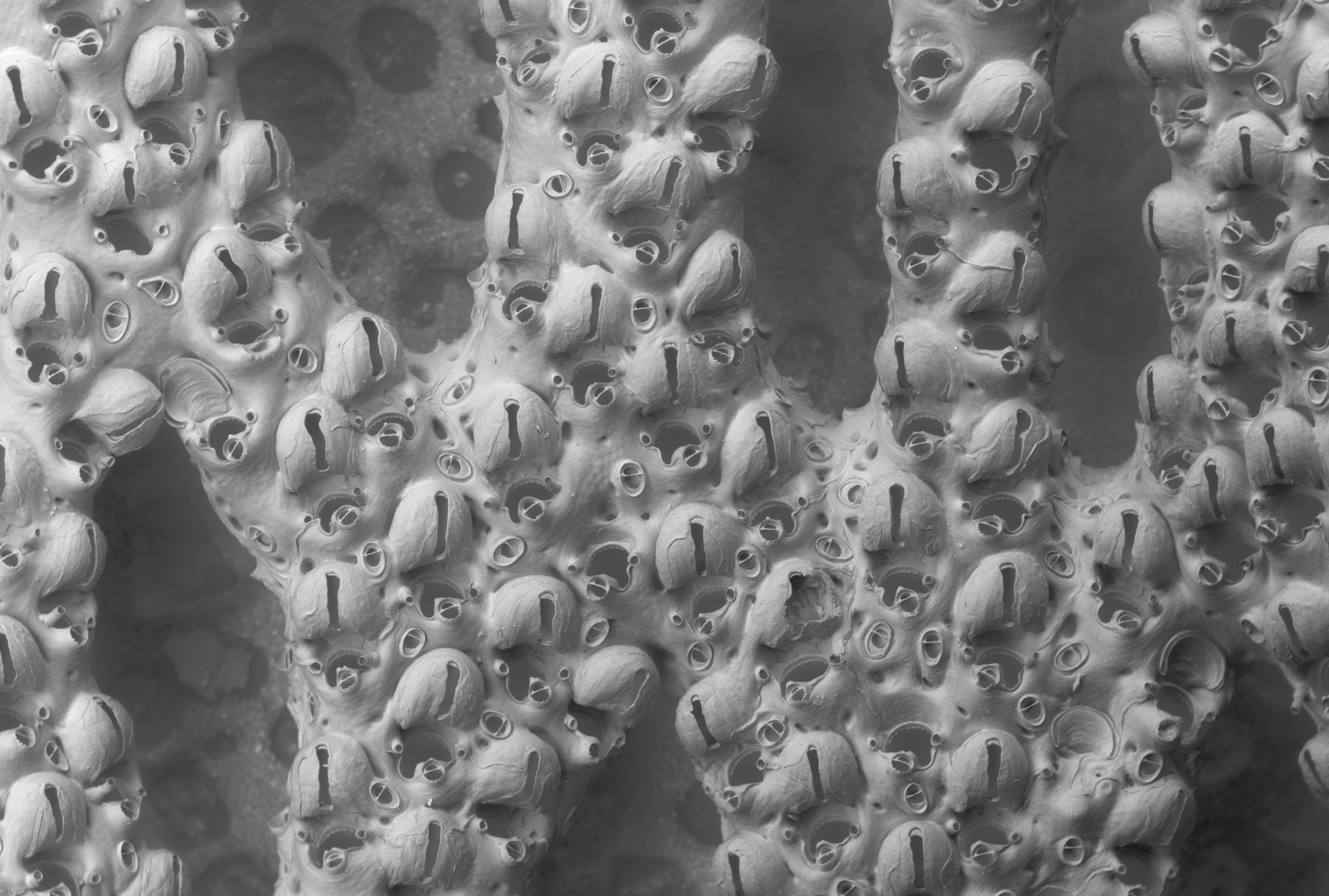
The distribution of pores.
Cheilostomatid bryozoans with a frontal shield can have pores located somewhere on the surface. Type, shape, organization and size of these pores are also important features to tell apart genera and species.
In Fig. 2 you see Escharella klugei which has pores distributed only along the margins of the zooids. Other species, like Cheilopora sincera in Fig. 7, have pores that are distributed evenly over the surface.
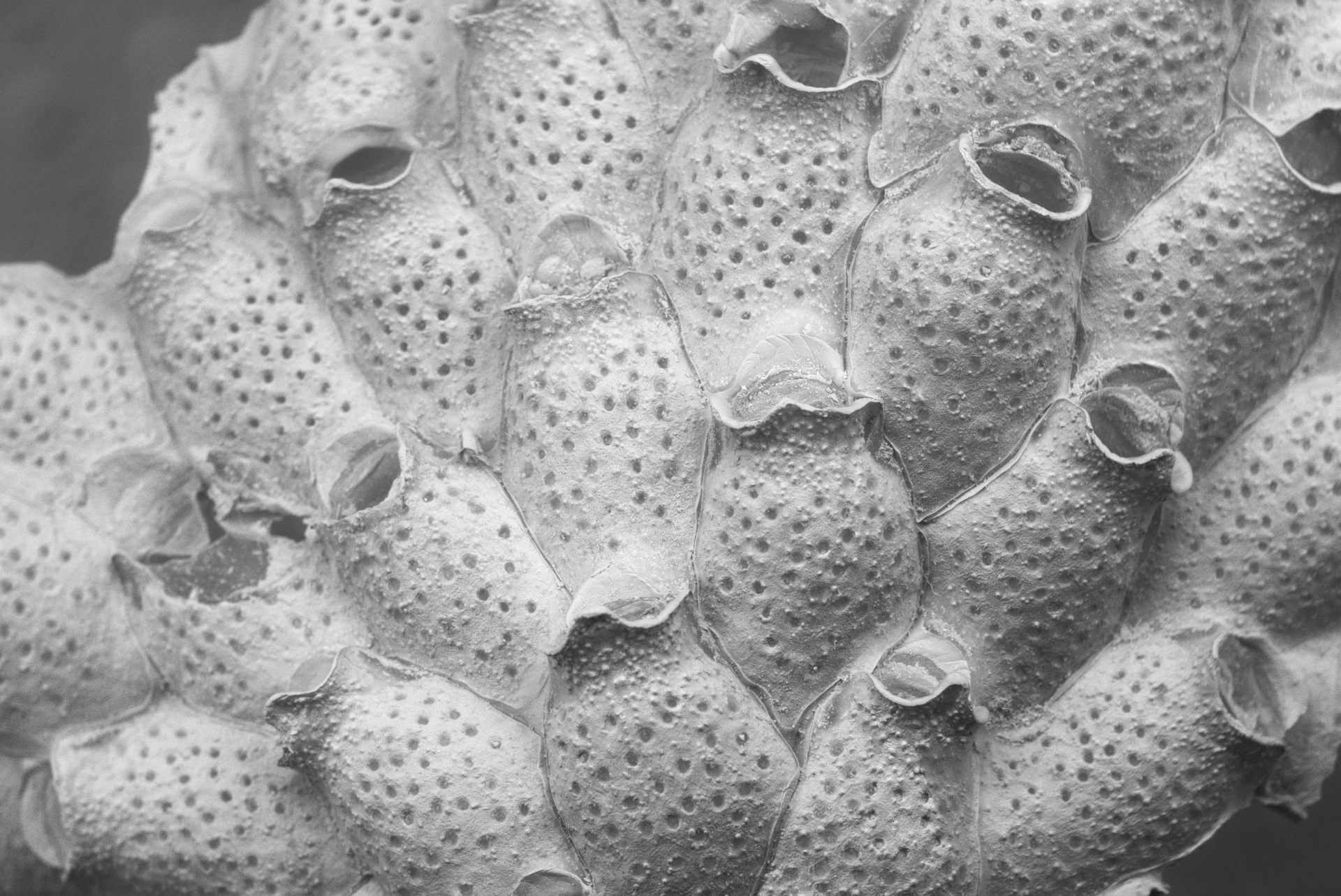
The orifice
The zooids have an opening (orifice) through which the animal itself (polypid) with the tentacle crown (lophophore) comes out to feed. The shape of this opening is essential to identify many cheilostomatid bryozoans.
In addition to the shape, there are also small structures connected to the orifice that are used for species identification.
A lyrula is a small, often anvil-like structure found by the orifice in some cheilostomatid families (Fig. 8). The size of the lyrula in relation to the size of the orifice can help identifying certain species. Some bryozoans have an orifice where the lower side has a kind of a slit/cleft. This is called a sinus (Fig. 9), and like the lyrula the shape and size often differ between different species.
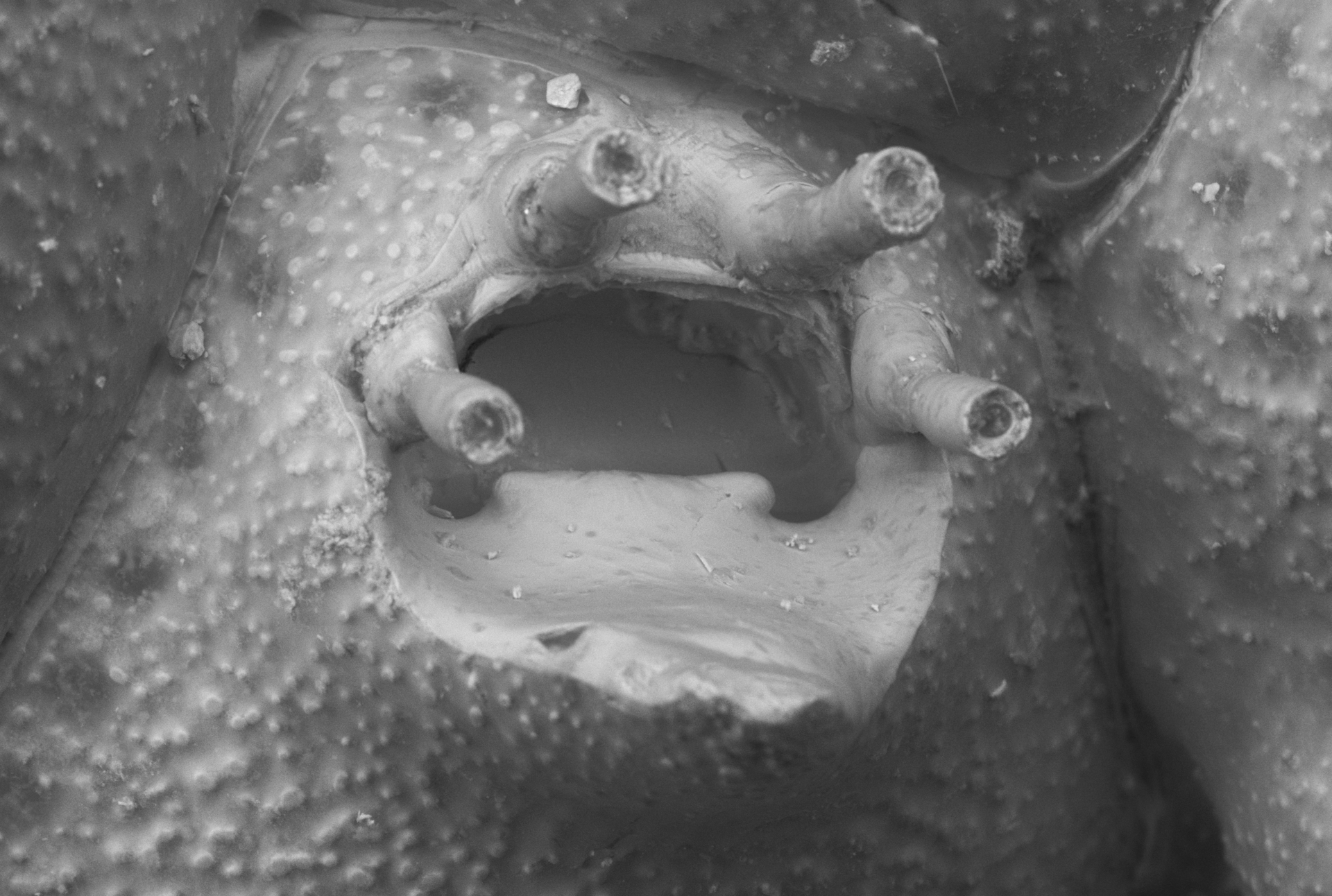
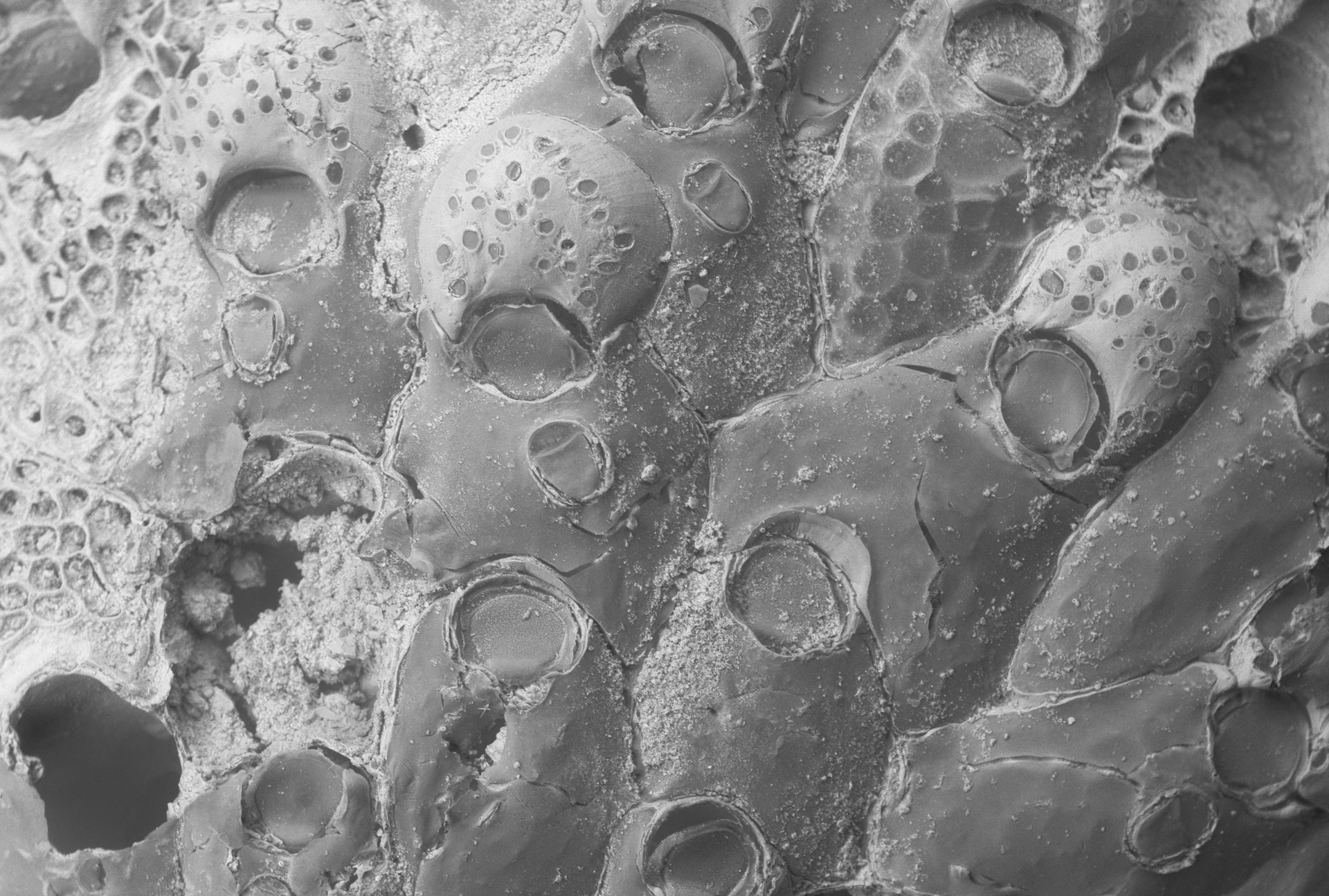
Spines: Number and location
A number of cheilostomatid bryozoans have spines, seemingly a protection against predators or abrasion, that can differ in number and location. Some species only have spines around the orifice; others have spines distributed on the edge around the zooids.
Looking at the location, number and appearance of the spines is again important when identifying genera and species. In Fig. 8 we have an example of spines which are found only around the orifice, while in Fig. 4 we have an example of spines that are distributed around the zooid.
But what about all the other bryozoans?
Ctenostomatida and Cyclostomatida, which are the other bryozoan orders you can expect to find in Norway, are very different from Cheilostomatida. They both contain fewer characters to use in identification of genera/species and are quite difficult to work with, so making ID-guides for these groups will take some time.